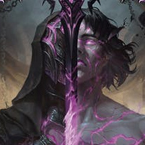In some cases, a set releases with obvious builds developed and communicated by the card pool. But in other cases, it takes some testing to figure out which cards go in which decks. Kevin Brayer's been hard at work playtesting the Runeblade cards of Dynasty, and has some answers to get you out ahead of the curve.
Peak Potential
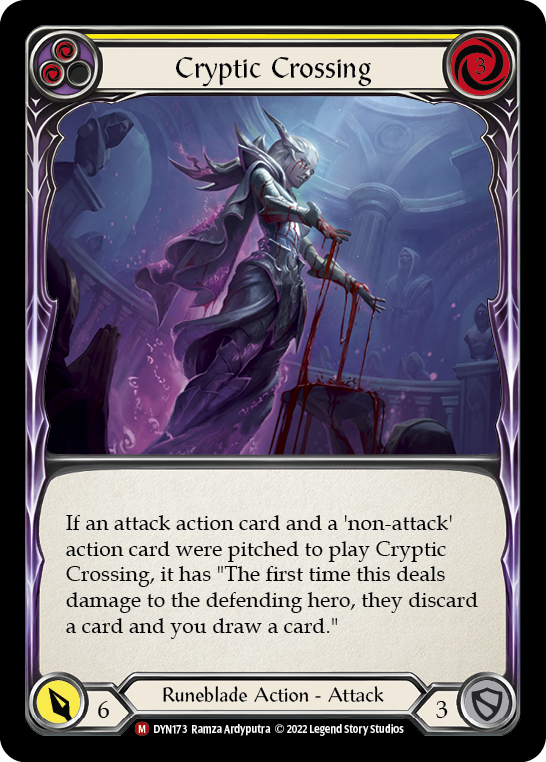
Cryptic Crossing is the card in the set that I think has the most potential across Viserai, Chane, and Briar. At its worst, it's a 6-power attack for 3 resources, which is only a little below rate and, more importantly, can still be played off a two-card hand. Pitching for 2 and blocking for 3 are great ancillary stats on an already good card (speaking as someone who registered Erase Face at the World Championship) and the bonus of being a main-deck-able 6 power card has real value against Dromai in CC and against Prism in Blitz (or the impending Living Legend format).
This is all just the fail state- at which point it's basically just Riled Up or Pack Call, both of which were inclusions in recent Calling San Jose Top 8 Rhinar lists.


When active, Cryptic Crossing has two of the strongest on-hit effects in Flesh and Blood stapled together: "they discard a card and you draw a card". Pummel and Snatch each have half of this effect, and both cards have been competitive staples since Welcome to Rathe. While Cryptic Crossing isn't destined for the same level of ubiquity, it certainly has the right stuff to make it a strong inclusion.
But attacking with an active Cryptic Crossing certainly isn't free. At a minimum, it requires a 3-card hand to attack for 6 with the effect active, and more than likely it requires sub-optimal pitching. Some hands just won't be able to activate the effect, either due to having all attacks or all non-attacks, or only having blue cards without a way to pitch two cards for Cryptic. The pitch requirement also makes it difficult to buff it and still get the damage effect with anything aside from zero cost buffs, of which there are relatively few good ones that can be used outside of Blitz (for various reasons). As a yellow pitch, it does at least do us the courtesy of enabling itself, as two copies in hand with any non-attack action (aside from Gorganian Tome) can send an active Cryptic Crossing in our opponents’ direction.
Rules Tip: Release Notes for Cryptic Crossing
- You may only pitch cards if there is a cost to pay. If you pitch a single card to pay for Cryptic Crossing, and there are no more resources to pay for, you can not pitch another card to gain the additional effect.
- You must pitch the card as part of the cost to pay to gain the additional effect. Having an attack or ‘non-attack’ action card in your pitch zone that you pitched for a different cost does not grant the additional effect.
So we've established that it could prove difficult to fully utilize Cryptic Crossing, but the real question is, is it worth trying? I think the answer is yes, but given the differences in their available card pools, it's for different reasons for each of the three Runeblades.
Briar's Cryptic Crossing
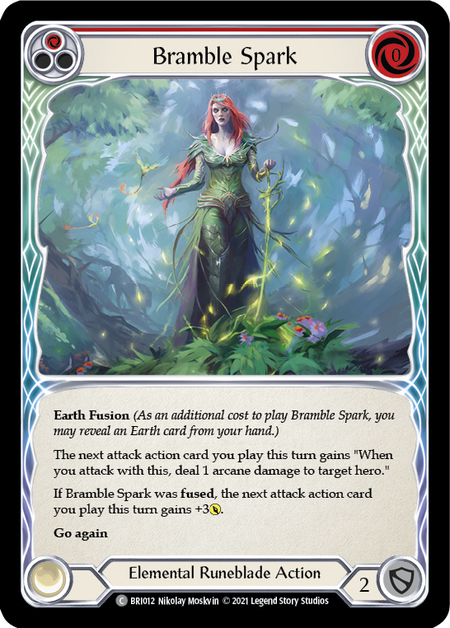
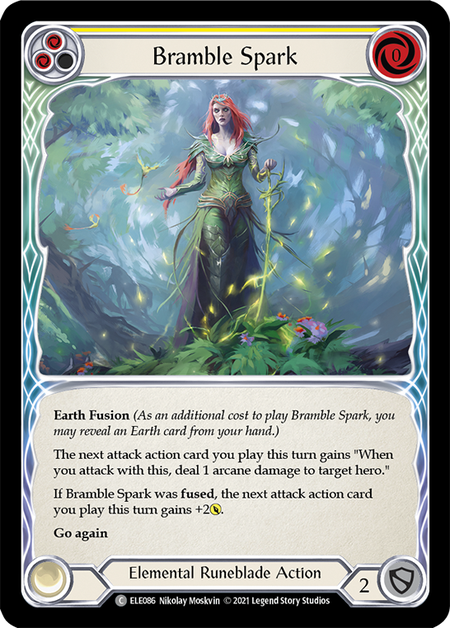
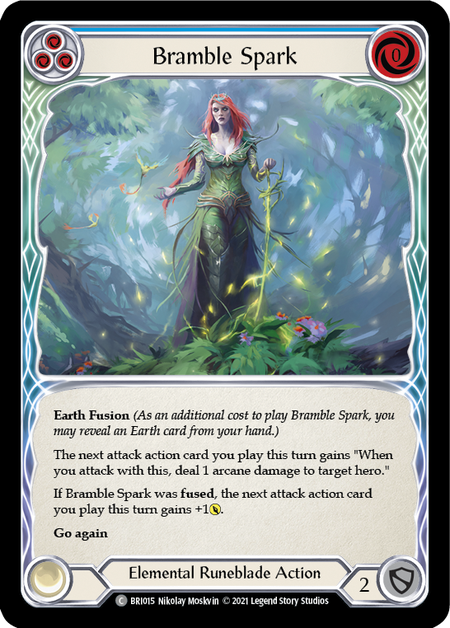
When it comes to Cryptic Crossing in Briar, Bramble Spark is the name of the game. Cryptic Crossing doesn't care about hitting, but rather the first time it deals damage. So if you fuse a Bramble Spark and are able to follow up with an active Cryptic Crossing, your opponent will need to stop both the 1 arcane damage as well as the 7-9 damage attack itself (depending on the color of Bramble Spark) in order to prevent the draw and discard effect. Sure, that's a specific 4-card hand in order to pull it off, but good Runeblade turns being card intensive isn't anything new. This new synergy may not be enough to allow taller Earth Briar builds to oust the current Channel Mount Heroic builds as the best version of Briar, but it's certainly a boost to the archetype.
Chane's Cryptic Crossing
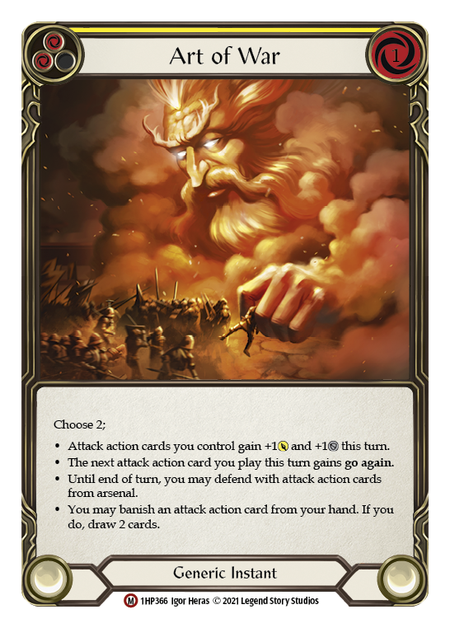
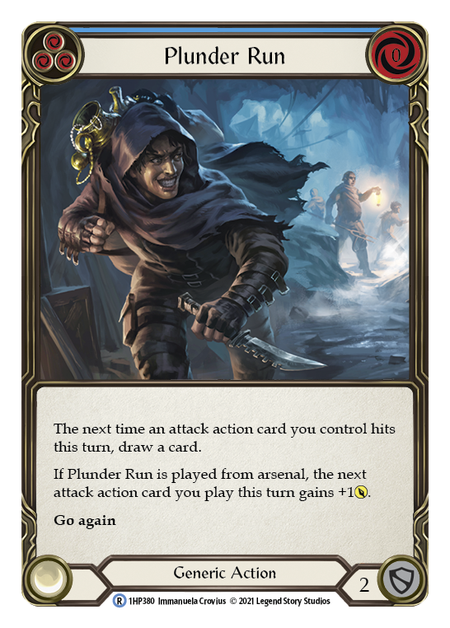
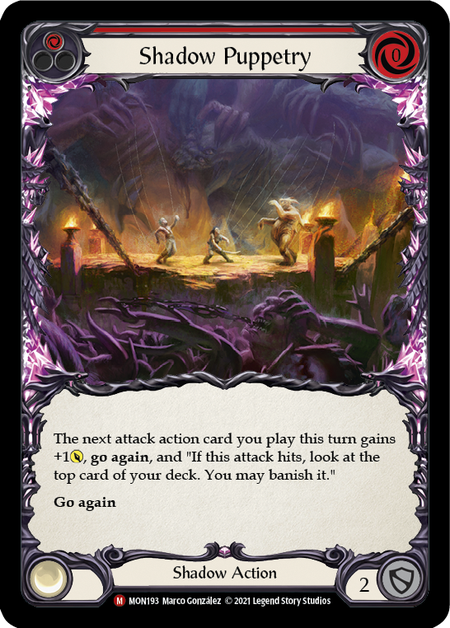
Where Chane is concerned, he would have loved having access to Cryptic Crossing in Classic Constructed, and I think there is a good chance that it sees some play in LL Chane decks down the line. It is a strong attack that demands cards from hand and encourages something that Chane already wanted to do, which is set up his final hand and set of banishes via pitch stacking. In the CC days of Chane, Enlightened Strike and Command and Conquer were often included in the deck as ways to make sure the early turns could still pack a punch and fight for tempo while building up our Soul Shackle count. I think Cryptic Crossing can fill that same niche even better, with the added bonus of not being blanked by Starvo's Crown of Seeds like Command and Conquer. Chane also has access to several cards that play very well with Cryptic Crossing, like Shadow Puppetry, Art of War (for the surprise +1), and Plunder Run (in Blitz).
Viserai's Cryptic Crossing

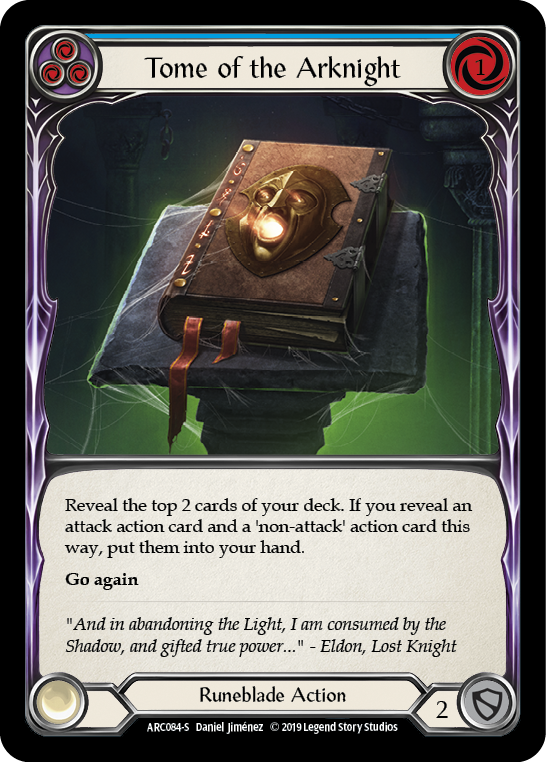
Viserai has the least innate synergy with Cryptic Crossing in his card pool - as he doesn't have any extra talent cards to abuse it with - but it might still find a place in the deck. The top 3 decks in the pre-Dynasty meta were Fai, Oldhim, and Iyslander, and Cryptic lines up well into each of them. The Ice heroes love dropping Channel Lake Frigid on us, and, ironically, nothing makes it easier to attack with an active Cryptic Crossing than it costing 4 resources! Fai was the most consistent aggressive deck in the format that never wanted to block, and Cryptic Crossing can punish them for that even more so than Consuming Volition or Reek of Corruption.
Cryptic Crossing also encourages a play pattern that conveniently facilitates an old favorite Runeblade card with an enormously high ceiling: Tome of the Arknight. When Tome hits, it's just about the best card in the game; and if we're playing in a way that helps us get full value from Cryptic Crossing, we can also be setting ourselves up for some powerful second cycle turns.
Lastly, one of the biggest concerns with playing Cryptic Crossing is what to do with the extra resources you have after you pitch inefficiently, but it's not only Guardians and Brutes who can get great value out of Pummel. "Cryptic Crossing for 10, you discard two cards and I draw a card" sounds like a pretty good turn to me.
Notable Prospects
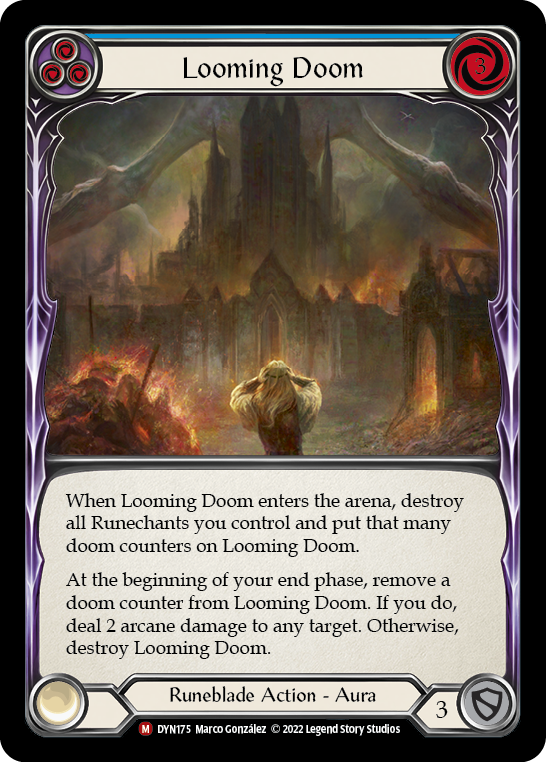
Looming Doom is a Viserai card through and through, as he is the one Runeblade who tends to prioritize Runechant generation. While it is an expensive card to fully utilize, it being a blue card that blocks for 3 make it much easier to include. Looming Doom effectively doubles the damage of the Runechants it eats, but the cost is that you have to wait a number of turns for your investment to pay dividends. Instances of 2 arcane damage vs 1 is a big deal though, and with Rosetta Thorn not long the CC format, it will soon be the only way for Runeblades to consistently deal more than 1 arcane damage (Vexing Malice, Sonata Arcanix, Flicker Wisp, Inspire Lightning, and Invert Existence are the only other cards capable of dealing more than 1). Dealing that arcane at the end of the turn can give you some valuable breathing room for your Spellbound Creepers, and in the later stages of games it can offer inevitability as it slowly chips away at your opponent's life. I've got two copies of Looming Doom in my current Viserai list as the card seems pretty poor in multiples, but over time I think it will prove itself to be a staple in midrange builds, replacing filler NAA blues like Oath of the Arknight.
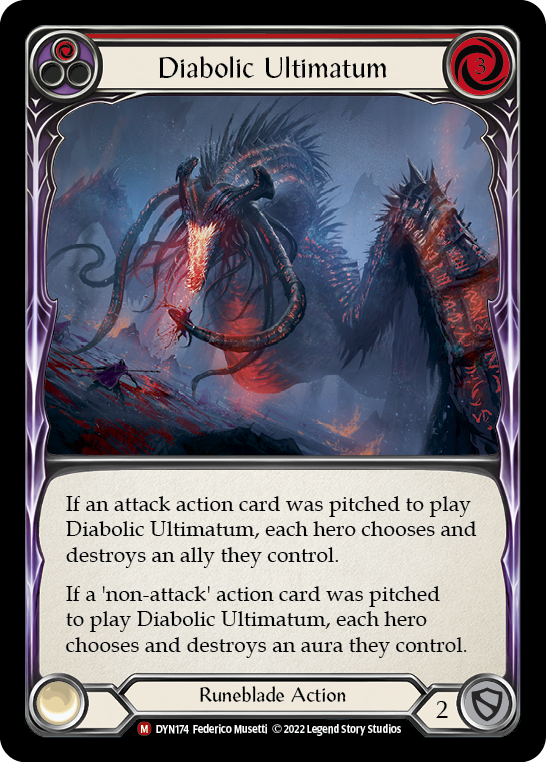
Diabolic Ultimatum is a powerful but niche sideboard card, not unlike Argh... Smash! for Brutes. When it's good, it's probably great; and otherwise you just don't want it in your deck, which pretty much rules it out as an option for Blitz. It does have some potential applications in CC though, as Iyslander leans on cards like Insidious Chill, Channel Lake Frigid, and Frost Hex, which are all fine targets for Ultimatum. Frost Hexes notably enter play under the opponent's control, so you can kill two birds with one stone with your Ultimatum if you time it right.
As with most great power, it isn't without drawbacks. It doesn't have go again, which is annoying for every Runeblade aside from Chane. The effect is symmetrical, so you're forced to destroy your own aura when you play it if you're not lucky enough to have some Frost Hex fodder (any Frostbites you have will be paid for and destroy themselves before you can choose to destroy them). It also lets each player choose their own aura to destroy, so if Chane tried to use Ultimatum to destroy an Arc Light Sentinel, Prism could potentially generate a Spectral Shield in response and destroy it instead to preserve the ALS. On top of all that, 3 resources is a fairly high cost for clearing a bit of board state.
Runeblades have historically matched up pretty well into Illusionists, so if that trend continues then access to the Ally destruction could remain mostly superfluous. Currently the only Ally that any Runeblade has access to is Ursur, and it's easy enough to just avoid playing Ultimatum when it would cost you your Demonic Ally. If a defensive style of Viserai that is looking to build up immense amounts of Runechants catches on, Ultimatum could fill an important role in dealing with board state issues without requiring an attack. For the moment, I think Runic Reclamation will remain the premiere sideboard card to bring in against Illusionists and some Channel Lake Frigid decks, but I can certainly imagine a future where Diabolic Ultimatum serves as a key sideboard option.
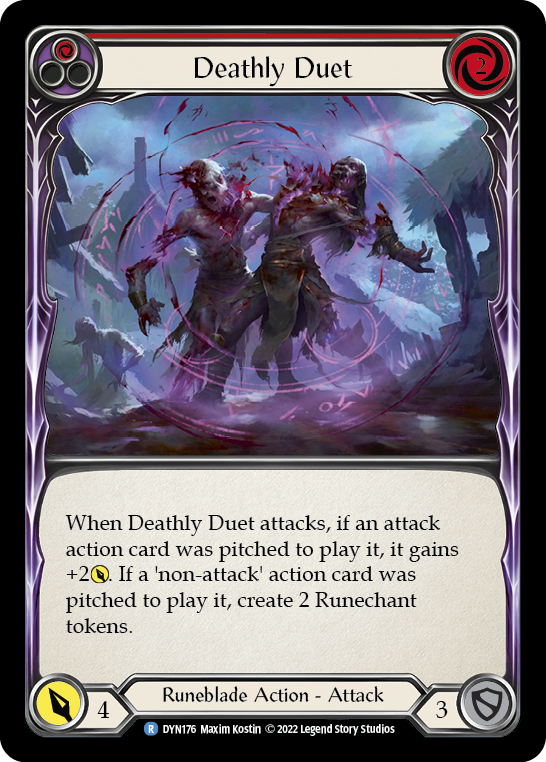

Deathly Duet is an interesting new addition that shares some of the same highs and lows of Cryptic Crossing. When you get the full effect, it is solidly above rate, and without, you come up a little short. I think Deathly Duet will form a nasty pairing with Shrill of Skullform in the Viserai builds centered around 2-cost attacks. At the very least, I think blue Deathly Duet should replace blue Spellblade Assault in any list that was already playing the latter.
A lot of other classes are envious of the power of blue Runeblade attacks like Shrill because it is generally a 5-power attack for two resources. Well, the ceiling on blue Deathly Duet is a 6 damage for two! To get that kind of damage efficiency on a blue is close to unheard of. Sure there are hoops to jump through to get it, and some of the time it will just be a 4-power attack for two or a Spellblade Assault clone; but if you're attacking with a blue then your hand is already probably not great, so packing some damage potential into your resource package can be very valuable.
Author's Note: One thing that I don't like about these 'pitch matters' cards is that they further punish you for playing anything that isn't an action, like Arknight Shard or Pummel. I'm all for deckbuilding restrictions, but did Arknight Shard really need another hit to its playability?
Looking into the future for Runeblades, Briar and Rosetta Thorn aren't long for CC, which means that Viserai players will be in the market for a new weapon of choice. Reaping Blade was the go-to option in the times before Rosetta Thorn for efficiency reasons, but if we're playing a build of Viserai looking to maximize Deathly Duet-style cards by pitching a little inefficiently, we might find ourselves with a version of the deck that is in the market for the 2-cost Nebula Blade, and only resort to bringing in Reaping Blade against Ice heroes.
Unlikely Additions
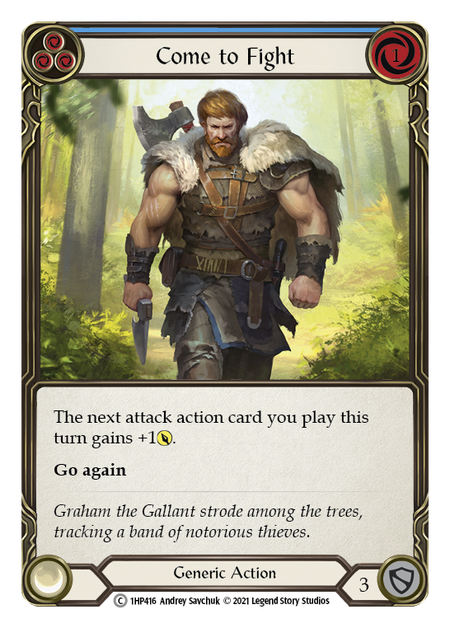
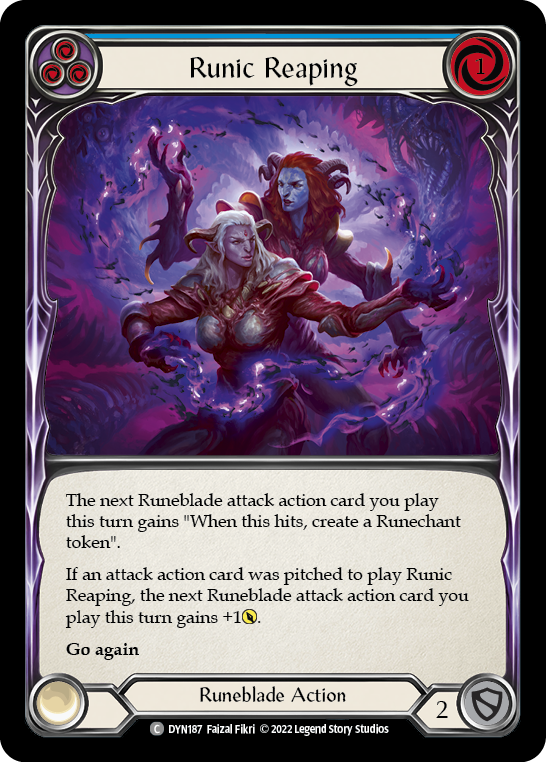
Runic Reaping is a card I really wanted to like, but the numbers just aren't there. The true power of Mauvrion Skies comes from the go again it offers, and it is because of that go again that the on-hit effect becomes scarier as those Runechants are just waiting to follow up the Mauvrion Skies empowered attack on the same turn. The fact that the on hit effect is what scales on the card means that the Blue is the only version of the card really worth considering, but even then it just asks too much for too little. I don't want to jump through a hoop just for a slightly upgraded blue Come to Fight that doesn't even block for 3. I've already gone over the downfalls of attack/non-attack pitch requirements, and Runic Reaping actively makes it more difficult to get the full power out of Cryptic Crossing and Deathly Duet, which makes it a no for me.
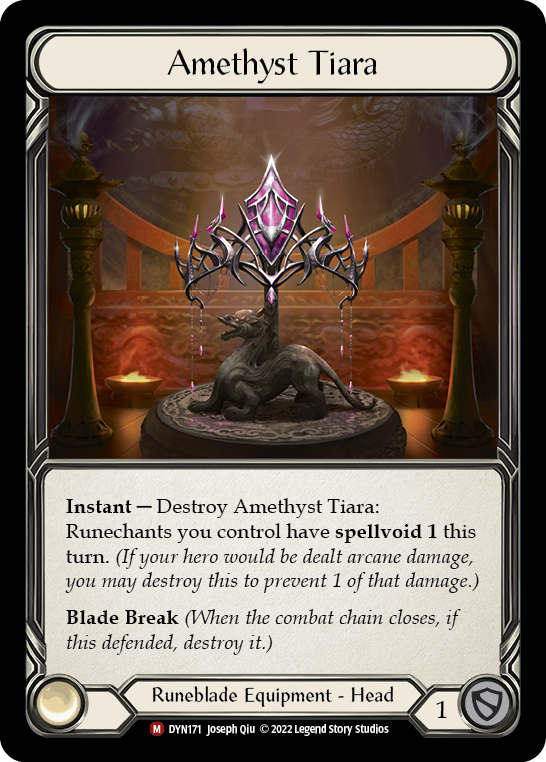
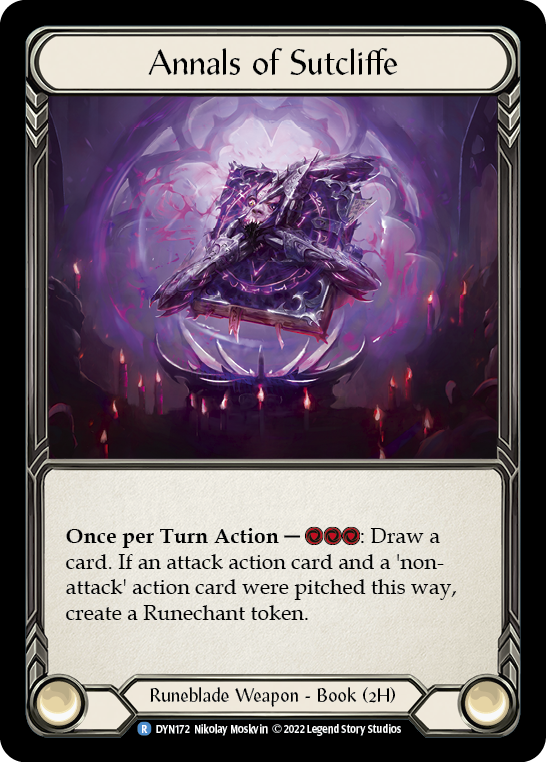
LSS has decided that no one should need to work as hard as Hayden Dale did to get the win with OTK Viserai into Oldhim in the 2021 Australian National's final. Annals of Sutcliffe is a dream addition for Runeblades looking to utilize the 'durdle turtle' game plan. Grasp of the Arknight becomes virtually unusable around 13+ Runechants, and you ran the risk of getting a whole hand of attack action cards that could force you go fire off your attack early wasting all the effort to build up. But now, Annals gives you a pitch sink that will always cost 3, giving you that all-important way to sink attack actions to the bottom of your deck until you need them later on. Plus, if you also have a spare non-attack action to pitch with it, you'll net a Runechant for your trouble. Pretty sweet support for a pretty unique playstyle.
Amethyst Tiara has some absolutely incredible art and a really unique - albeit specific - use case. In the times before the dawn of Duskblade and Rosetta Thorn, OTK Viserai - wielding Reaping Blade - existed in Blitz as a means to counter the heavy presence of Ira and Dorinthea in that format. While it had a pretty excellent matchup into those martial heroes, OTK Viserai would consistently get annihilated by Kano (as it turns out, not attacking is a poor strategy against the original Wizard). Amethyst Tiara is exactly the kind of equipment that OTK Vis needs to not just get smoked by the Wizard - now more than ever with the existence of Aether Wildfire. You can only absorb a big Kano turn once though, so you better have a plan to win quickly after you sacrifice Runechants to survive.
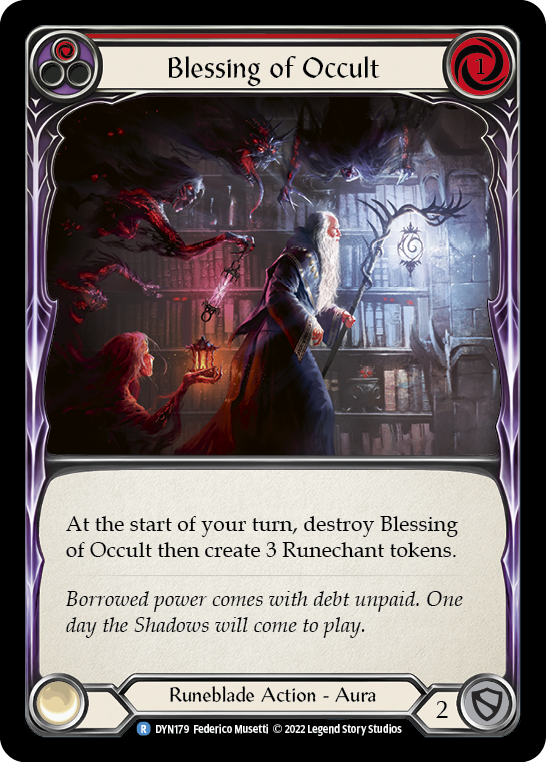

Blessing of Occult reads a lot like a worse Read the Runes, but the more I thought about it the more I realize that's not quite the case. While it is just worse than Read the Runes most of the time, it does have a few things going for it. By now we've all seen the power of Swarming Gloomveil and Shrill of Skullform, so the fact that Blessing of Occult creates 3 Runechants at the start of the turn could be relevant, especially if we get more cards that have scaling payoffs based on the number of auras generated in a turn. And even though it doesn't matter a great deal now, being an aura itself could be important in the future. For now, though, I think Blessing of Occult will be relegated to OTK Viserai builds and will otherwise not see much competitive play.

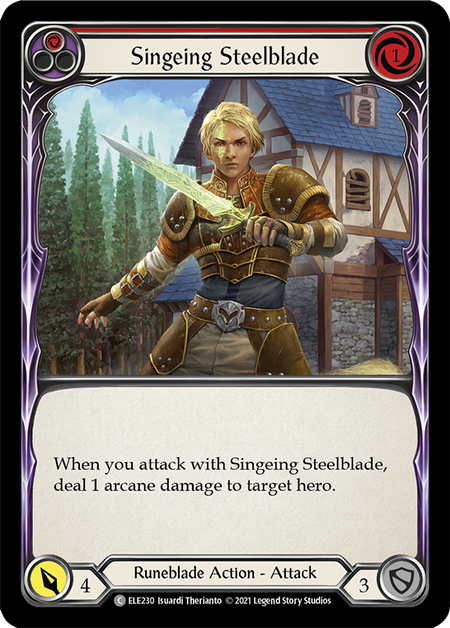

Aether Slash's art is sweet, but definitely looks like it belongs on an Elemental Runeblade attack action. Aside from that, it's a Singeing Steelblade with an added hoop to jump through that grants it some minor additional utility. That minor upside is probably not worth the risk of not being able to pitch a non-attack action, but if we ever find ourselves in a meta filled with tons of Aether Ashwings, then maybe it'll be time to give Aether Slash a look.
Sky Fire Lanterns is too low impact to see any real play. In the current Flesh and Blood world where people are trying to out-value you by pitching one card to play Wounded Bull for 8, spending an entire card for a chance at a Runechant just doesn't come close to cutting it.
Runeblade Royalty
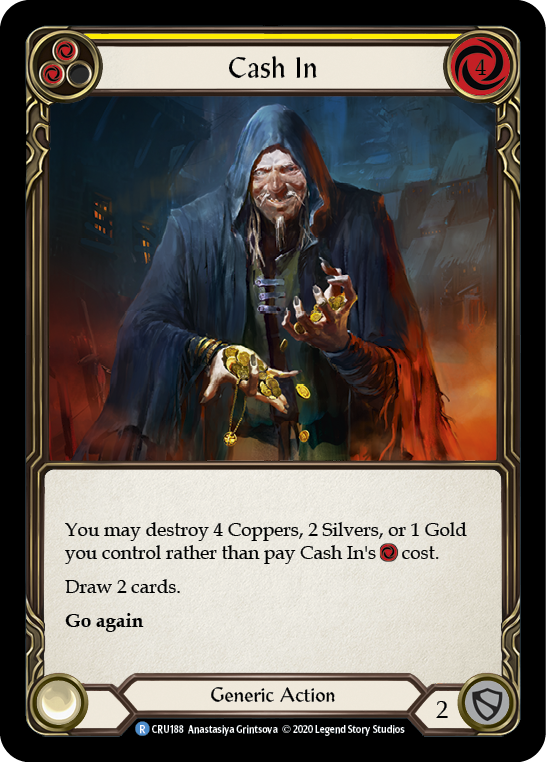
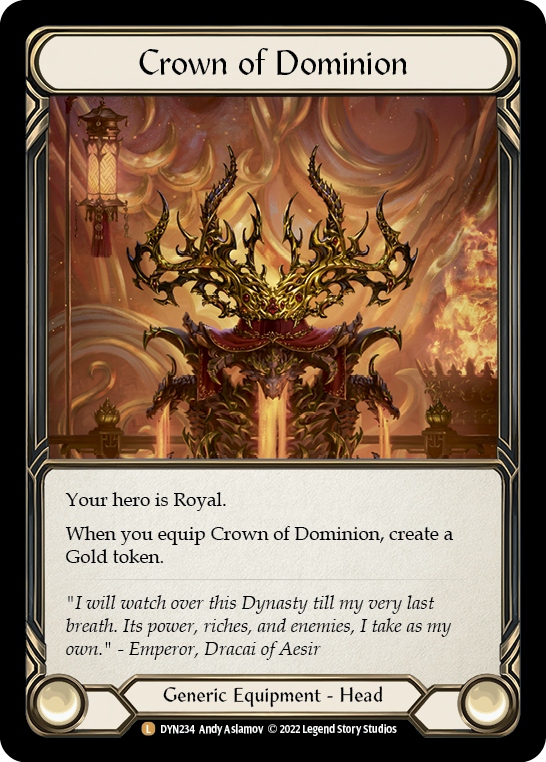
Runeblades can use the Crown of Dominion and Cash In combo about as well as Kano, as Cash In activates the Runeblade non-attack action synergies for us. It will be interesting to see if a "free" Cash In proves to be powerful enough in Blitz to justify not playing Crown of Providence.
I don't think any of the Runeblades are interested in the Imperial cards, as they're just too low-impact for the action point cost to play and activate on top of requiring that you be playing Crown of Dominion to utilize them fully. I'm inclined to leave all the Imperial cards to Kano and the Emperor, as James White intended.
Starting Points
If you need a decklist to start you off, I've got Viserai and Chane decks (built for Classic Constructed, though obviously Chane can't use that until the Living Legend format arrives).
Music by Wavecont | Licensed under creative commons Attribution-ShareAlike 4.0 International | Music promoted by Chosic



